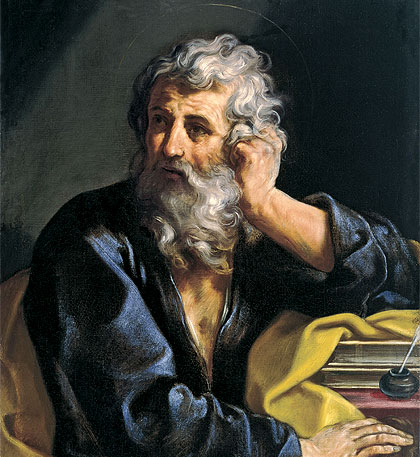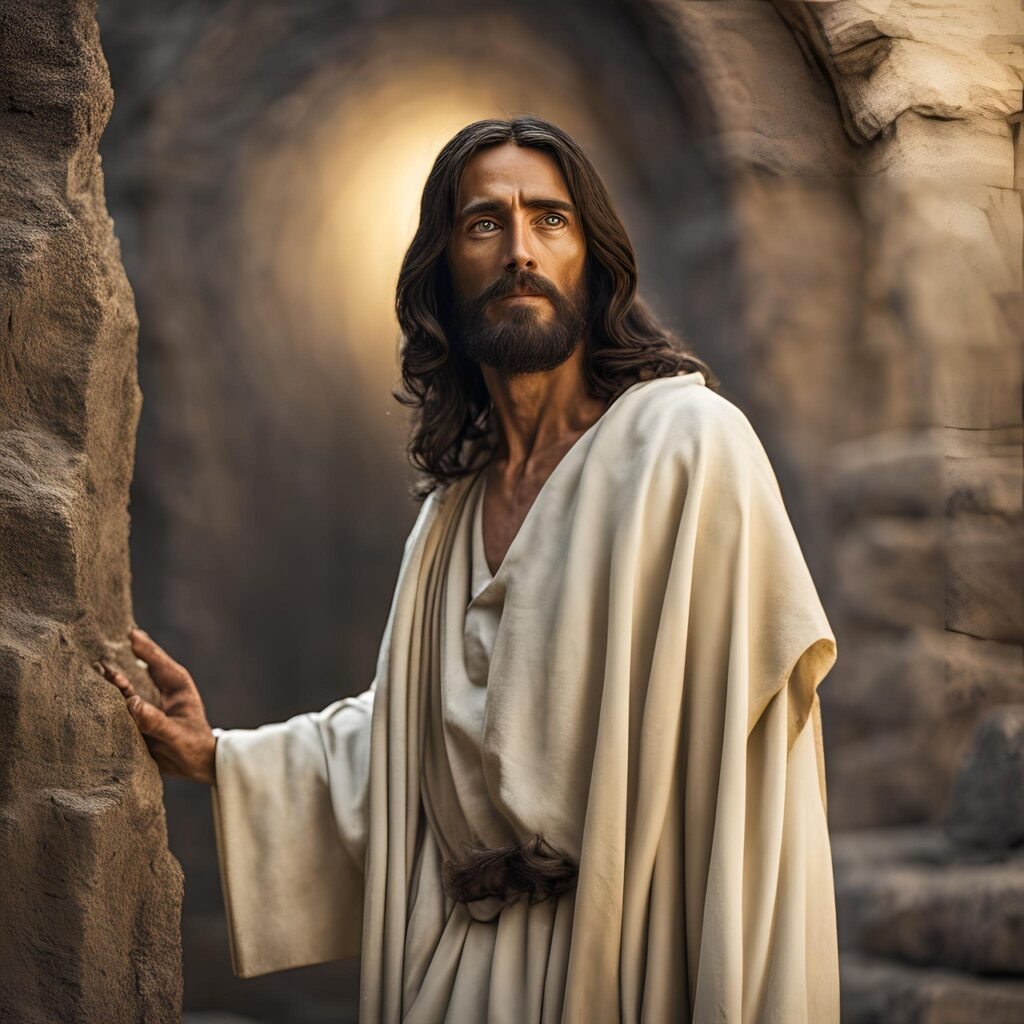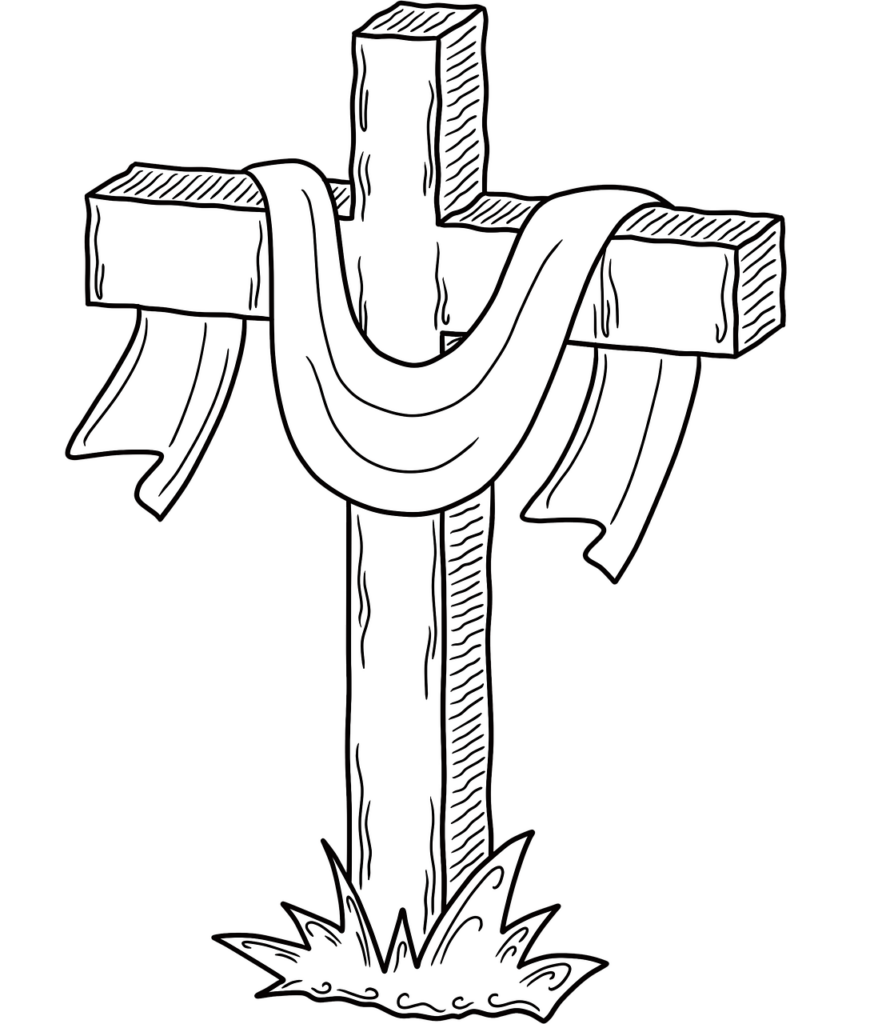Saint Mark, April 25
Evangelist

The evangelist Mark was born into a wealthy Hebrew family. We only know about him what is narrated in the Acts of the Apostles and some letters of Saints Peter and Paul. He was not a disciple of Jesus, although some scholars identify him with the boy, son of the widow Mary, who followed Jesus after his arrest in the garden of Gethsemane.
Mark collaborated with the Apostle Paul, whom he met in Jerusalem. He traveled with him to Cyprus and, later, to Rome. In the year 66, Saint Paul writes to Timothy from a Roman prison: “Take Mark and bring him with you, because he is useful to me for the ministry” (2Tm 4:11).
Saint Mark in Rome and other trips
It is not known whether Mark arrived in Rome in time to attend Paul’s martyrdom, but the truth is that in the capital of the Empire, he put himself at the service of Peter. The Roman Basilica of Saint Mark, in the historic center, testifies to his presence: it is said that it was erected on the site of the house in which the evangelist lived.
Saint Peter often mentions the name of Mark. In his first letter, for example, we read: “The church in Babylon, which has been chosen like you, greets you, as does my son Mark” (1Pt 5:13). It also appears in the Acts of the Apostles (12:12), after Peter was miraculously released from prison: “When he realized what had happened to him, he went to the house of Mary, the mother of John, who was called Mark, where a large group was gathered in prayer.”
After Peter’s death, Mark is lost. An ancient tradition places him in Egypt as an evangelizer and founder of the Church in Alexandria. Another says that before going to Egypt, he traveled to Aquileia (in northern Italy) to take care of the evangelization of the northeastern part of the Empire. There he converted Ergamora, who was the first bishop of the city. After leaving Aquileia, it seems that, due to a storm, he arrived at the Rialtine Islands, the original nucleus of the future city of Venice. There he dreamed of an angel who promised him that in that land he would sleep, waiting for the last day.
The supreme testimony of Saint Mark
The evangelist Mark died, probably between the years 68 and 72, in Alexandria, Egypt. In the Acts of Marcus (4th century) it is written that on April 24, the pagans dragged him through the streets of Alexandria, tied with ropes around his neck, and then threw him into prison. There he was comforted by an angel. The next day he suffered the same torment, and died. His body had been destined for the flames, but he was saved by the faithful and buried in a grotto.
From there he was transferred, in the 5th century, to a church. According to a legend, in the year 828, faced with the threat of the Arabs, two venetian merchants took the body to their city, and there he remains buried in the Basilica dedicated to him. Some of his relics are also preserved in Cairo (Egypt), in the Cathedral of Saint Mark, seat of the Coptic Orthodox Patriarch.
The “concrete” Gospel of Mark
Mark is considered “the stenographer” of Saint Peter. His Gospel was written between the 50s and 60s. According to tradition, he transcribed Peter’s preaching, addressed mainly to the first Christians of Rome, without elaborating it or adapting it to a personal scheme. Therefore, his Gospel has great liveliness and clarity. He wrote in Greek, the most widely spoken language at that time, with the aim of demonstrating the power of Jesus Christ, Son of God, which was manifested in numerous miracles.
The words of the Gospel of Mark “Go into all the world and preach the gospel to every creature” clearly indicate, according to Pope Francis, what Jesus wants from his disciples.
Mark, patron saint of Venice
Saint Mark was chosen as the main patron saint of Venice in the year 1071. Over the centuries, the city remained inextricably linked to him, to the point that the symbol of the evangelist, the winged lion, became the symbol of the city.
Saint Mark is also the patron saint of notaries, glaziers and opticians. He is venerated as a saint by several Christian churches, in addition to the Catholic one, including the Orthodox and the Coptic, which consider him their patriarch.
Related

Reflection by Bishop Enrique Díaz: The Lord’s mercy is eternal. Alleluia
Enrique Díaz
27 April, 2025
5 min

After Eight Days Jesus Arrived: Commentary by Fr. Jorge Miró
Jorge Miró
26 April, 2025
3 min

The Perspectivas del Trabajo Foundation is founded with the aim of promoting virtues for professional development
Exaudi Staff
25 April, 2025
2 min

Reflection by Bishop Enrique Díaz: Alleluia, alleluia
Enrique Díaz
20 April, 2025
5 min
 (EN)
(EN)
 (ES)
(ES)
 (IT)
(IT)

